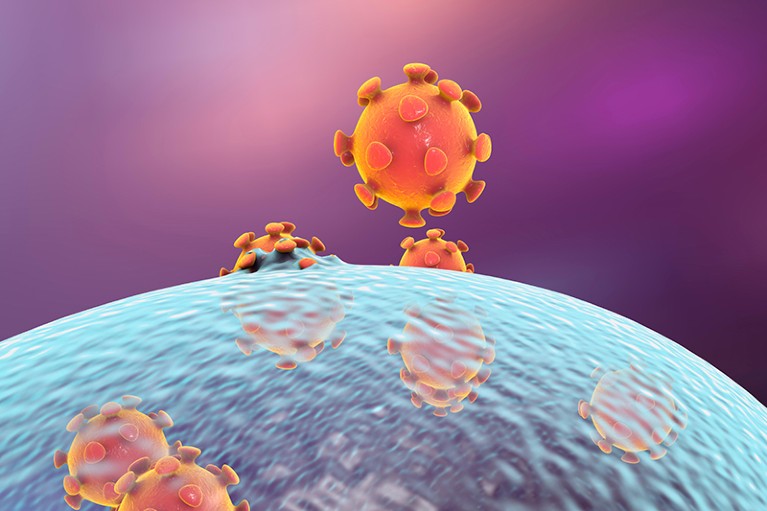
Credit: Science Photo Library /Alamy Stock Photo
By the 1990s, it was generally understood that HIV replicates vigorously on initial infection and then seems to ‘hide’ for many years, causing few clinical symptoms until AIDS develops. Researchers had struggled to detect the virus during the clinically latent phase, assuming it lay dormant. However, with improved sensitivity of the methods used to detect HIV RNA, this assumption did not stand. A series of three papers published in 1993 concluded that HIV actually replicates continuously and is present throughout lymphoid tissues over the course of disease.
By using a PCR method—known as quantitative competitive PCR (QC-PCR)—that has more stringent internal controls and greater sensitivity, Piatak et al. were able to accurately quantify levels of HIV RNA in the blood of patients at all stages of infection. They revealed ranges of viral RNA copy number of 100 to ~22,000,000 copies per milliliter of plasma and proved this approach to be much more sensitive and more reproducible than the standard PCR approaches and methods of the time that measured circulating HIV p24 antigen and culturable virus. Significantly, the 235-fold decrease in virus levels that can occur following initial infection was only detectable by QC-PCR and not by measuring p24 antigen or culturing virus. The authors were able to correlate HIV RNA levels with clinical stage of disease and CD4+ T cell counts, and they inferred, as others had suspected, that higher levels of circulating virus and failure to effectively control viral replication after initial infection are associated with a negative prognosis.
Importantly for the time, Piatak et al. showed that QC-PCR provided a more sensitive means to evaluate the impact of new therapeutic interventions (MILESTONE 13, 14) on viral load. Finally, their observations in patients receiving antiviral treatment and after discontinuing treatment hinted at the dynamic nature and high levels of ongoing viral replication and the role of this replication in the pathogenesis of HIV infection and AIDS.
The active nature of infection was confirmed by two other groups, who published their findings in Nature at the same time. Pantaleo et al. analyzed viral burden and levels of viral replication in the blood and lymphoid tissues of the same individuals at various stages of HIV disease. They observed for the first time a striking dichotomy in viral burden and replication between the blood and lymphoid tissues in early-stage disease. Even in early stages of disease, when HIV burden in the blood is low or absent, infected cells preferentially accumulate and actively replicate in lymphoid tissues. As had been previously described, closer examination confirmed that HIV particles, probably as part of immune complexes, are trapped by the villous processes of the follicular dendritic cells that surround lymphocytes in lymphoid tissues. As disease progresses, lymph node architecture is disrupted and virus-trapping capabilities are lost, which the authors assumed results in increased levels of virus in the blood at late stages of disease.
Similarly, Embretson et al. revealed a large pool of infected CD4+ lymphocytes and macrophages throughout the lymphoid system of patients with early to late stages of infection. Extracellular virus associated with follicular dendritic cells was also detected, which the authors suggested may be transmitted to lymphocytes migrating through lymphoid follicles. They calculated that the reservoir of infected cells is large enough to account for immune depletion in AIDS and thereby represented a new challenge and new target for therapeutic interventions.
Finally, the impression that HIV disease was not active had led to a misguided strategy to only begin antiretroviral therapy once clinical symptoms appeared or when there was a marked decline in CD4+ T cell count. The knowledge of its continually active state represented a major conceptual change and paved the way for better strategies of intervention (MILESTONE 20, 21).

 Nature Milestones in HIV research
Nature Milestones in HIV research